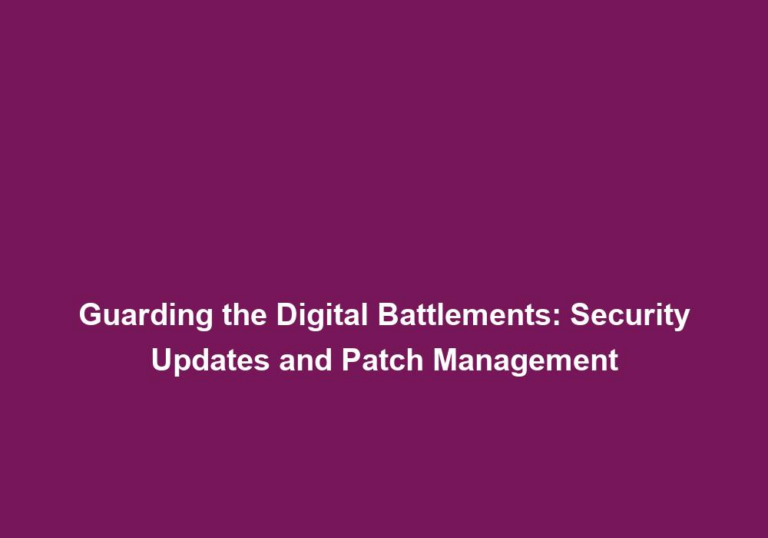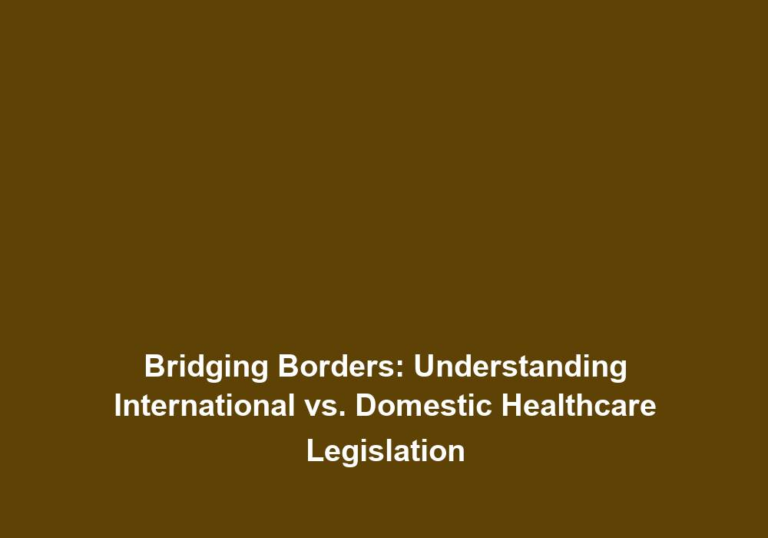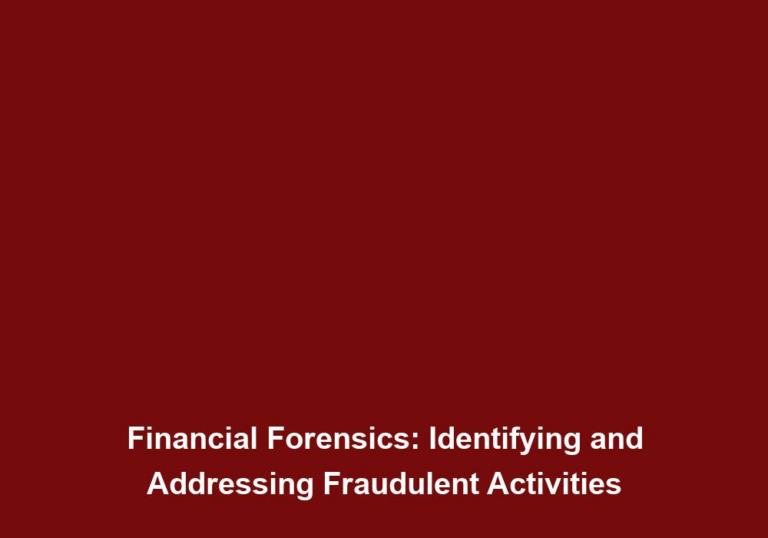Guardians of Healthcare: Data Protection and Cybersecurity Essentials
In today’s digital age, data protection and cybersecurity have become crucial aspects of the healthcare industry. With the increasing digitization of patient records and the widespread use of technology in healthcare operations, it is essential for healthcare organizations to prioritize the safeguarding of sensitive information. This article will delve into the essentials of data protection and cybersecurity in the healthcare sector, outlining the key measures and best practices that healthcare providers should adopt.
The Importance of Data Protection in Healthcare
Data protection in healthcare is of utmost importance as it ensures the privacy and security of patients’ sensitive information. Healthcare providers collect and store a vast amount of patient data, including medical records, insurance details, and personal information. This data is not only valuable to the patients but also to malicious actors who seek to exploit it for various purposes, including fraud and identity theft.
By implementing robust data protection measures, healthcare organizations can mitigate the risks associated with data breaches and unauthorized access to patient information. Moreover, ensuring the confidentiality of medical records instills trust in patients, promoting a more secure and reliable healthcare system.
Expanding on this point, healthcare organizations should consider the following additional measures to enhance data protection:
-
Implement Data Classification: Healthcare providers should categorize their data based on its sensitivity and importance. This allows them to allocate resources and implement appropriate security controls based on the level of risk associated with each category. For example, highly sensitive data such as patient medical records may require stronger encryption and access controls compared to less sensitive administrative data.
-
Develop Data Retention Policies: It is essential for healthcare organizations to establish clear policies regarding the retention and disposal of patient data. By defining how long data should be retained and when it should be securely destroyed, organizations can minimize the risk of unauthorized access to outdated or unnecessary data.
-
Regularly Monitor and Audit Data Access: Healthcare providers should implement robust monitoring and auditing mechanisms to track access to patient data. By regularly reviewing access logs and conducting audits, organizations can identify any suspicious activities or unauthorized access attempts. This allows for timely detection and response to potential threats.
Cybersecurity Essentials for Healthcare Providers
1. Conduct Regular Risk Assessments
Healthcare organizations need to regularly assess their security vulnerabilities and potential risks. By conducting risk assessments, they can identify and address any existing weaknesses in their systems, processes, or infrastructure. This could involve analyzing network vulnerabilities, evaluating access controls, and reviewing data encryption practices. Risk assessments provide insights into areas that require immediate attention and enable healthcare providers to prioritize their cybersecurity efforts effectively.
In addition to the mentioned risk assessments, healthcare providers can consider the following practices to enhance their cybersecurity posture:
-
Vulnerability Scanning and Penetration Testing: Regular vulnerability scanning and penetration testing help identify vulnerabilities in the network infrastructure and applications. By simulating real-world attacks, healthcare organizations can proactively identify and fix security weaknesses before they are exploited.
-
Threat Intelligence Sharing: Collaborating with other healthcare organizations and sharing threat intelligence can help identify emerging threats and vulnerabilities. This information sharing allows organizations to stay updated on the latest cybersecurity trends and adopt necessary preventive measures.
-
Security Audits: Conducting periodic security audits by external auditors can provide an independent assessment of an organization’s cybersecurity practices. These audits help identify any compliance gaps and provide recommendations for improvement.
2. Implement Strong Access Controls
Controlling and managing access to sensitive data is crucial in protecting patient information. Healthcare providers should implement strong access controls such as multi-factor authentication, role-based access controls, and regular user access reviews. This ensures that only authorized personnel can access patient data, reducing the risk of data breaches caused by insider threats or unauthorized access.
To further strengthen access controls, healthcare organizations should consider the following practices:
-
Privileged Access Management: Implementing privileged access management solutions allows organizations to tightly control access to critical systems and sensitive data. This involves assigning privileges based on job roles and responsibilities, regularly reviewing access privileges, and monitoring privileged user activities.
-
User Behavior Analytics: Implementing user behavior analytics solutions helps detect abnormal or suspicious user activities. By analyzing patterns and deviations from normal behavior, healthcare organizations can identify potential insider threats or compromised accounts.
-
Two-Factor Authentication (2FA): Enforcing the use of two-factor authentication for accessing sensitive systems and data adds an extra layer of security. This requires users to provide additional verification, such as a unique code sent to their mobile device, along with their username and password.
3. Encrypt Data
Encryption serves as a powerful tool to protect patient data both during transit and storage. Healthcare providers should ensure that all sensitive data, including medical records and personal information, is encrypted. Encryption transforms data into an unreadable format, making it extremely difficult for unauthorized individuals to decipher. By adopting encryption protocols, healthcare organizations significantly enhance their data protection capabilities.
To strengthen data encryption practices, healthcare providers should consider the following:
-
End-to-End Encryption: Implementing end-to-end encryption ensures that data remains encrypted throughout its entire lifecycle, from creation to transmission and storage. This protects data from unauthorized access at every stage.
-
Secure Key Management: Implementing secure key management practices is crucial to maintaining the integrity and confidentiality of encrypted data. Healthcare organizations should establish strict control over encryption keys, ensuring that they are securely stored and managed.
-
Data Loss Prevention (DLP) Solutions: Deploying DLP solutions helps monitor and prevent the unauthorized transmission of sensitive data outside the organization’s network. These solutions can identify and block attempts to send encrypted data to unauthorized recipients.
4. Train Employees on Cybersecurity Best Practices
Human error remains one of the leading causes of data breaches in the healthcare sector. Healthcare providers should invest in comprehensive cybersecurity training programs for their employees. These programs should cover topics such as recognizing phishing attempts, creating strong passwords, and handling sensitive data securely. By educating employees about cybersecurity best practices, healthcare organizations can minimize the risk of accidental data breaches and ensure that all staff members are well-versed in protecting patient information.
To enhance cybersecurity awareness among employees, healthcare organizations should consider the following practices:
-
Phishing Simulations: Conducting regular phishing simulations helps employees recognize and respond appropriately to phishing emails. These simulations can simulate real-world phishing attacks, providing valuable training opportunities.
-
Role-Based Training: Tailoring cybersecurity training to different job roles and responsibilities ensures that employees receive relevant and practical guidance. For example, administrative staff may require training on handling sensitive patient data, while IT staff may need training on incident response and system security.
-
Continuous Education: Cybersecurity threats evolve rapidly, and healthcare organizations should provide ongoing education and training to keep employees up to date with the latest trends and best practices. This can include periodic refresher courses and awareness campaigns.
5. Regularly Update Software and Systems
Outdated software and systems pose significant security risks, as they often contain vulnerabilities that hackers can exploit. Healthcare providers must establish a robust patch management process, ensuring that all software and systems are regularly updated with the latest security patches. Promptly applying these patches helps address known vulnerabilities, reducing the risk of cyber-attacks and data breaches.
To streamline the software and system update process, healthcare providers can consider the following practices:
-
Automated Patch Management: Implementing automated patch management solutions helps ensure that security patches are applied promptly and consistently across the organization. These solutions can schedule and deploy updates without disrupting critical operations.
-
Vendor Management: Maintaining strong relationships with software vendors is essential for timely access to security patches and updates. Healthcare organizations should establish communication channels with vendors to stay informed about upcoming patches and vulnerabilities.
-
Legacy System Mitigation: In cases where legacy systems cannot be updated with the latest security patches, healthcare organizations should implement compensating controls such as network segmentation, intrusion detection systems, or additional monitoring to minimize the associated risks.
6. Backup Data Regularly
Data loss can have severe consequences in the healthcare industry. Healthcare providers should implement regular data backup processes to ensure the availability and integrity of patient information. Backing up data protects against accidental deletion, hardware failures, or cyber-attacks that may compromise data integrity. Regularly testing the restoration process is crucial to verify the effectiveness of data backups.
To enhance data backup practices, healthcare organizations should consider the following:
-
Offsite Data Backup: Storing backups in offsite locations protects against physical disasters or incidents that may affect the primary data storage. Cloud-based backup solutions can provide secure and reliable offsite storage options.
-
Incremental Backups: Implementing incremental backups allows organizations to backup only the changes made since the last backup, reducing the backup time and storage requirements.
-
Regular Backup Testing: Performing periodic backup tests ensures that data can be successfully restored when needed. These tests should include verifying the integrity of backed-up data and validating the restoration process.
7. Establish an Incident Response Plan
Despite robust preventive measures, healthcare organizations should have an incident response plan in place. This plan outlines the steps to be taken in the event of a cybersecurity incident or data breach. It includes procedures for containing the breach, notifying affected individuals, and restoring normal operations. By having a well-defined incident response plan, healthcare providers can minimize the impact of security incidents and ensure a rapid and coordinated response.
To develop an effective incident response plan, healthcare organizations should consider the following components:
-
Incident Identification and Reporting: Establish clear procedures for employees to report suspected security incidents promptly. This ensures that incidents are identified and addressed in a timely manner.
-
Incident Containment: Define protocols for isolating affected systems or networks to prevent further damage or unauthorized access. This may involve temporarily disconnecting compromised systems from the network or shutting down affected services.
-
Communication and Notification: Establish communication channels and procedures for notifying relevant stakeholders, including patients, regulatory bodies, and law enforcement agencies. Transparent and timely communication helps maintain trust and facilitates a coordinated response.
-
Post-Incident Analysis: Conducting post-incident analysis allows healthcare organizations to identify the root causes of security incidents and implement corrective actions to prevent similar incidents in the future. This analysis should include a thorough investigation of the incident, documentation of lessons learned, and updates to security controls and policies.
Conclusion
Data protection and cybersecurity are paramount in the healthcare industry to safeguard patient information and maintain trust. By prioritizing measures such as conducting regular risk assessments, implementing strong access controls, encrypting data, and training employees on cybersecurity best practices, healthcare providers can significantly enhance their security posture. Regularly updating software, backing up data, and having a comprehensive incident response plan further strengthen the overall cybersecurity framework. By becoming the guardians of healthcare data, healthcare providers can ensure the privacy and security of patient information in this digital age.







